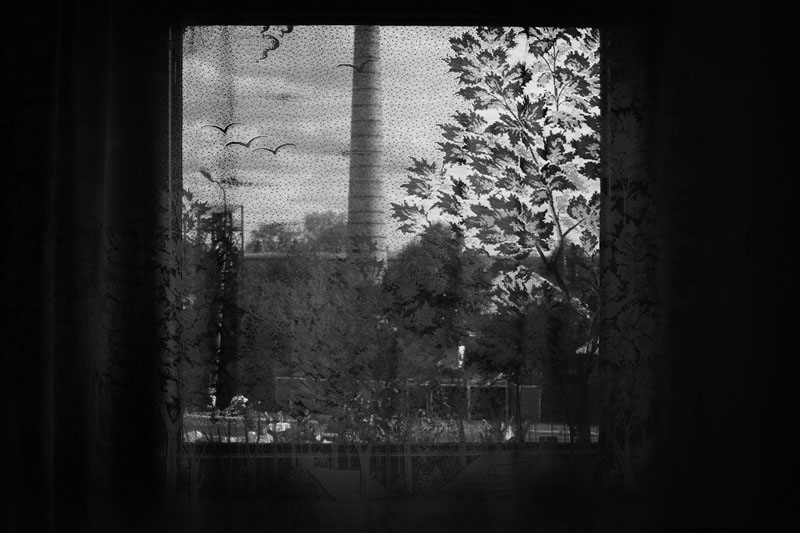

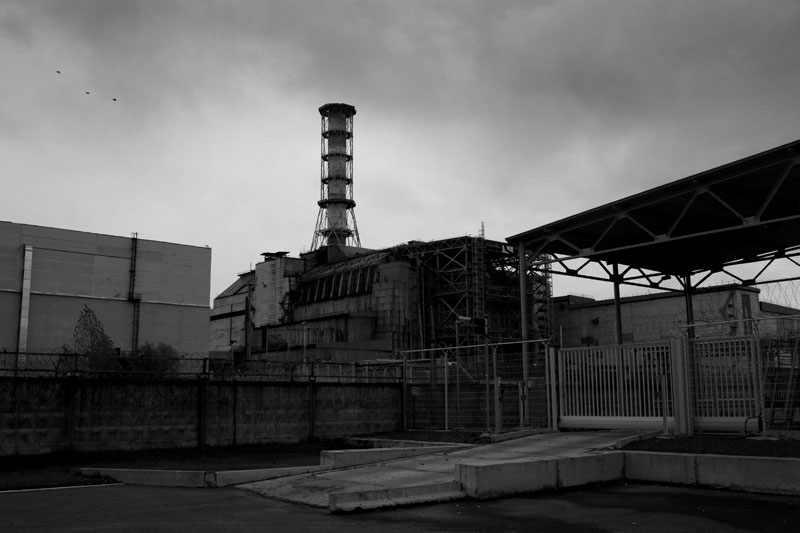


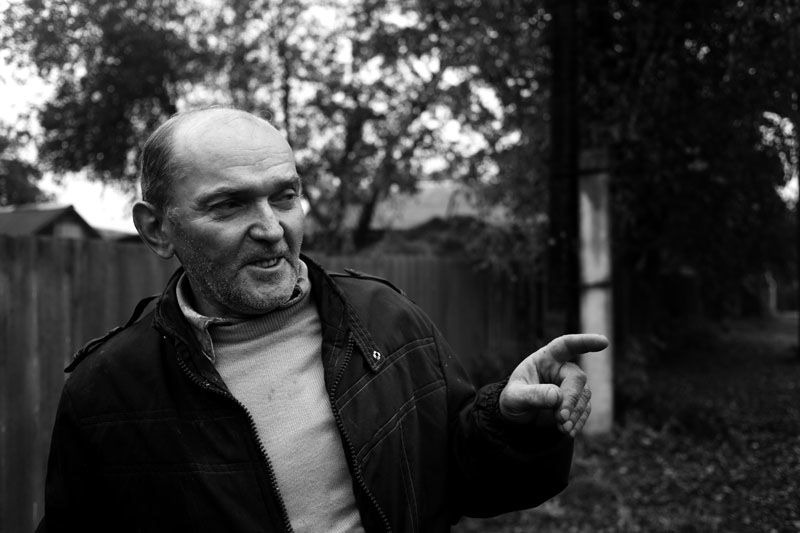
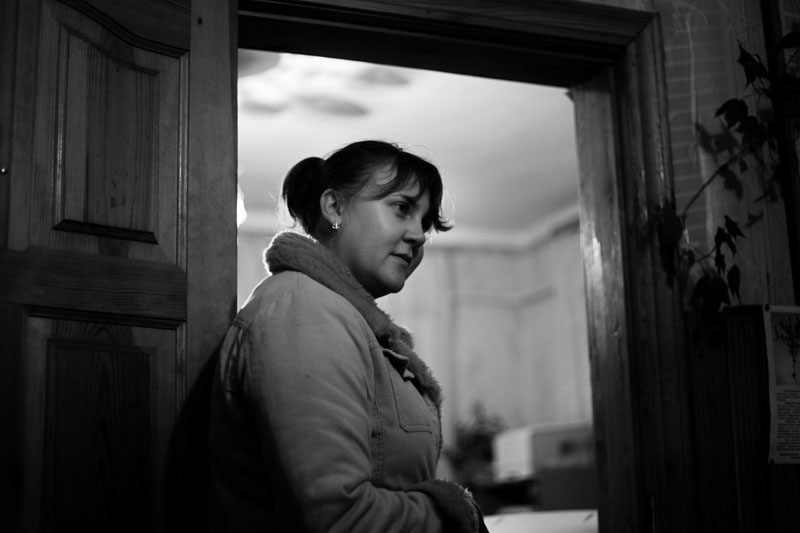

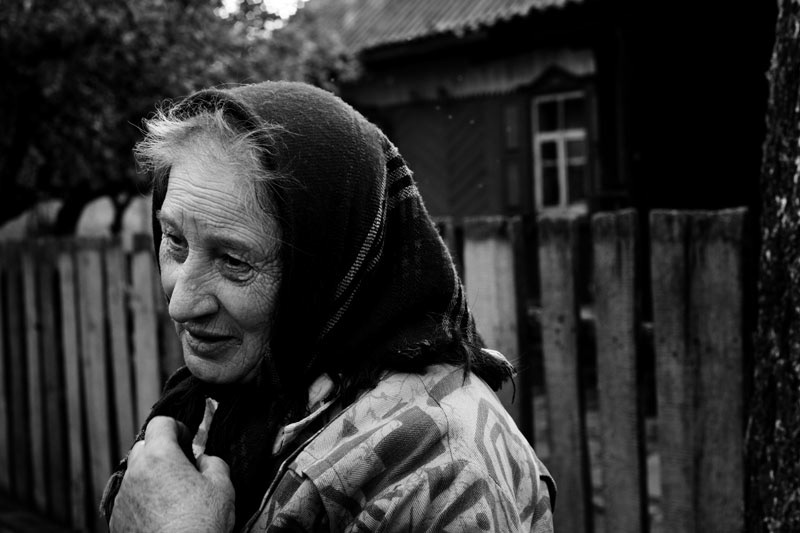
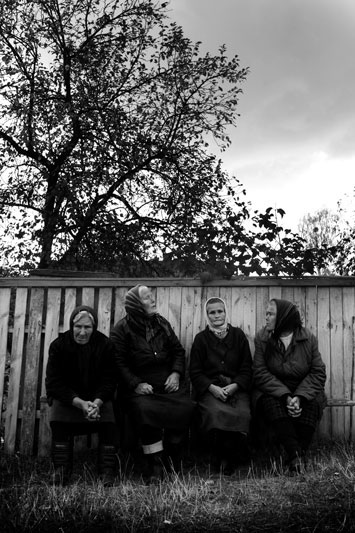

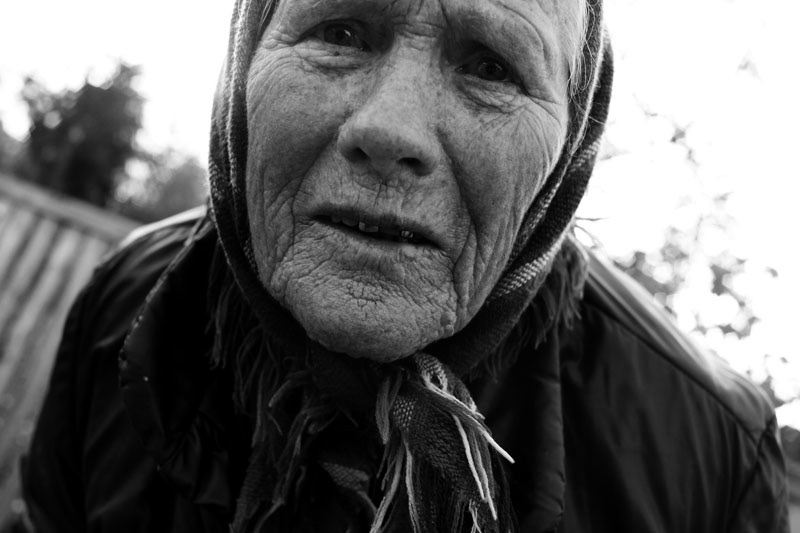
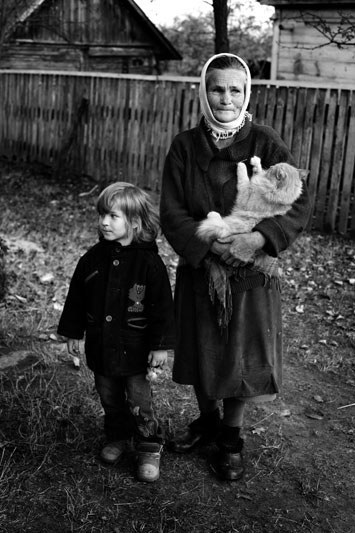
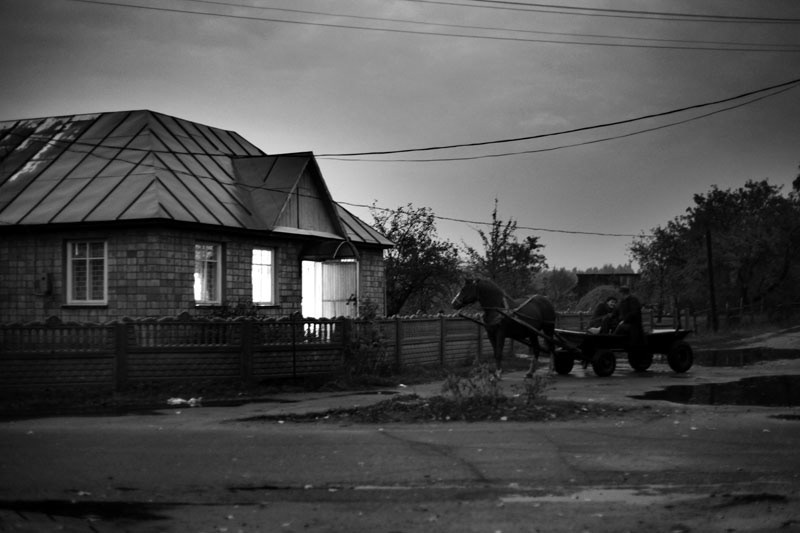


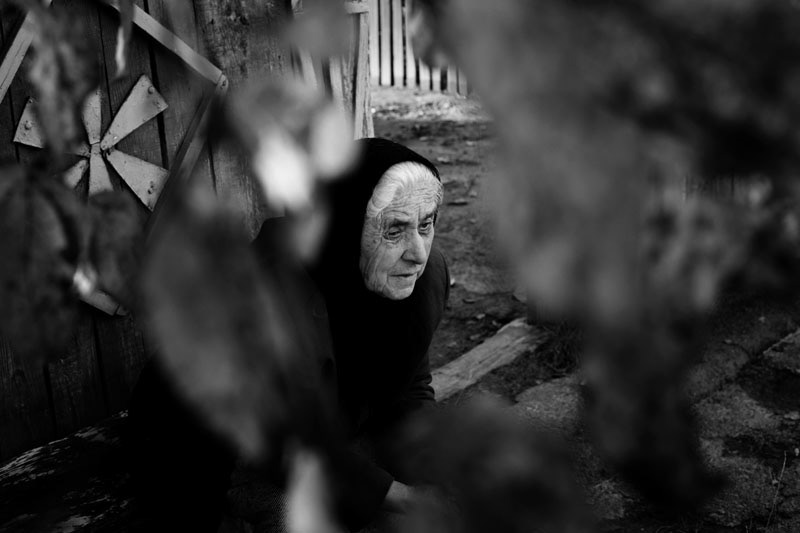

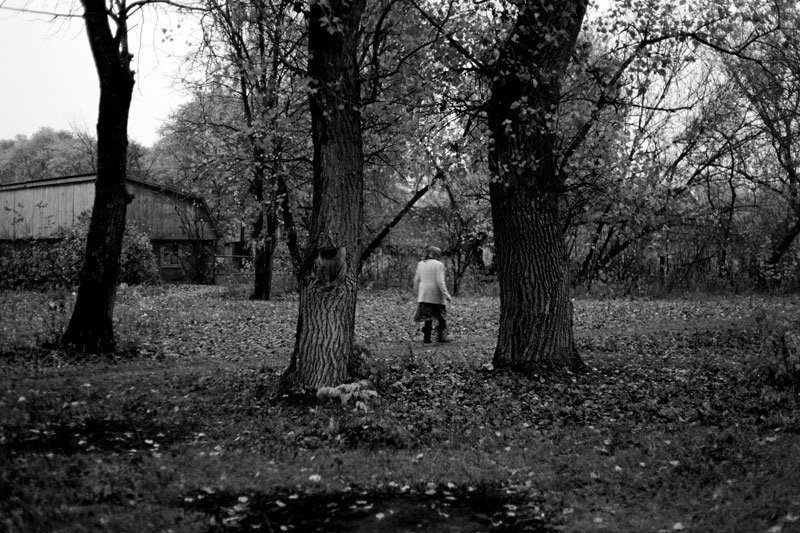



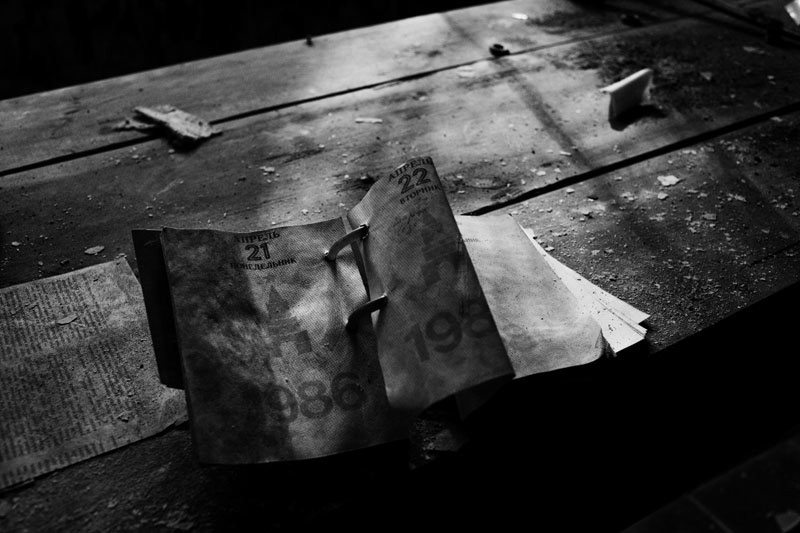
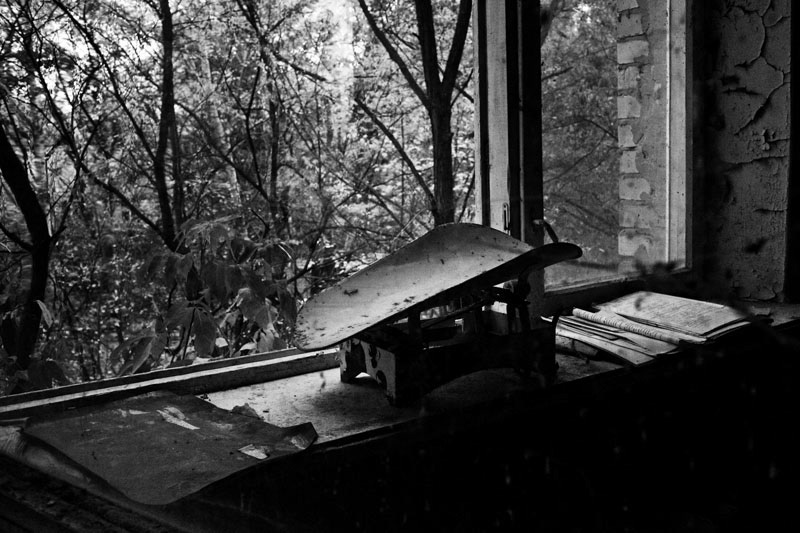
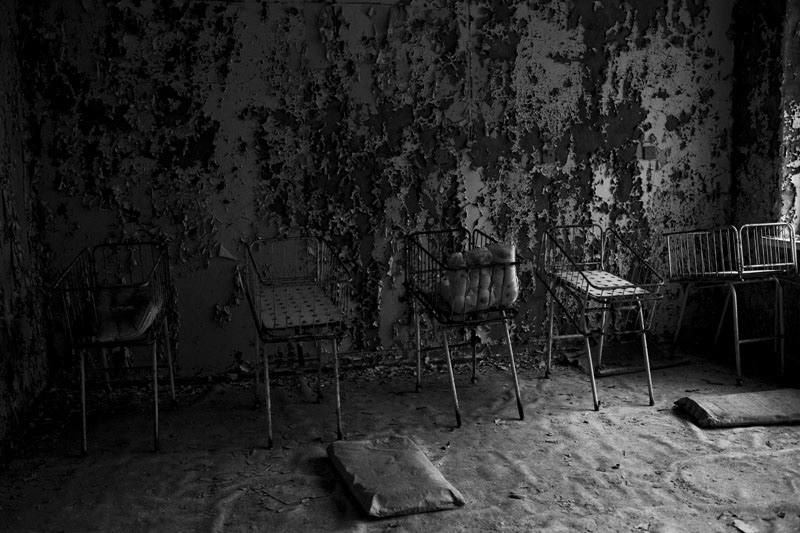
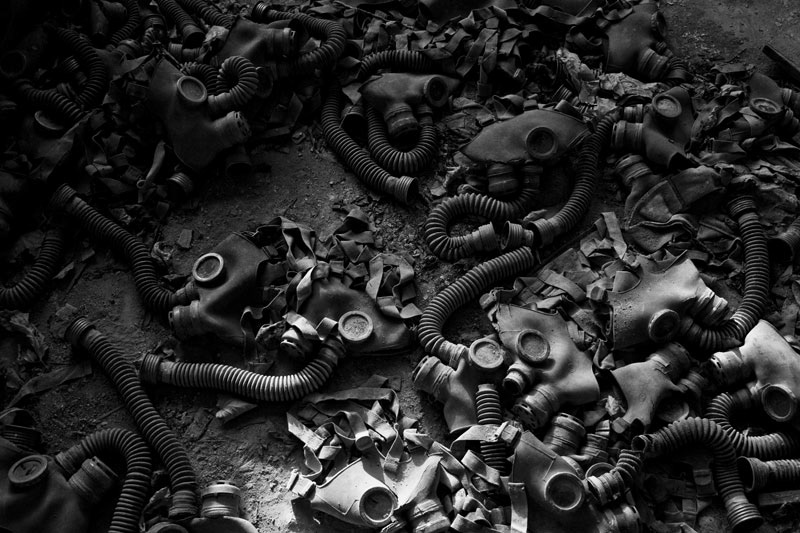






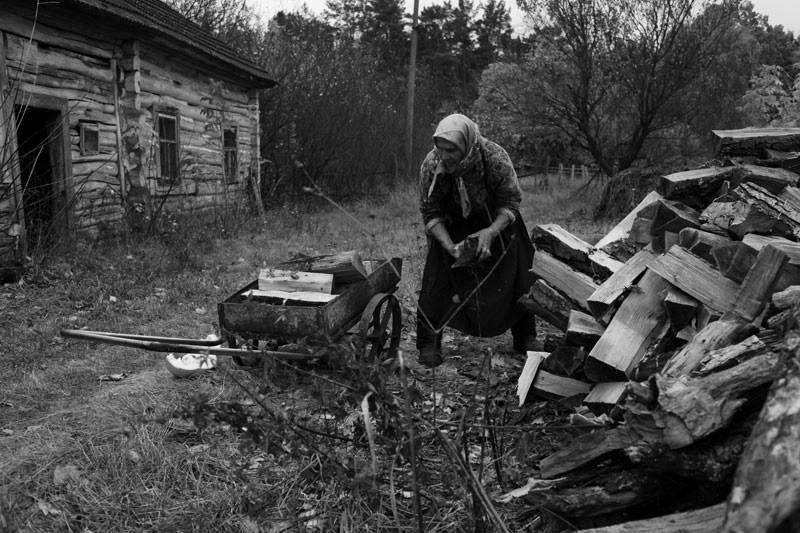

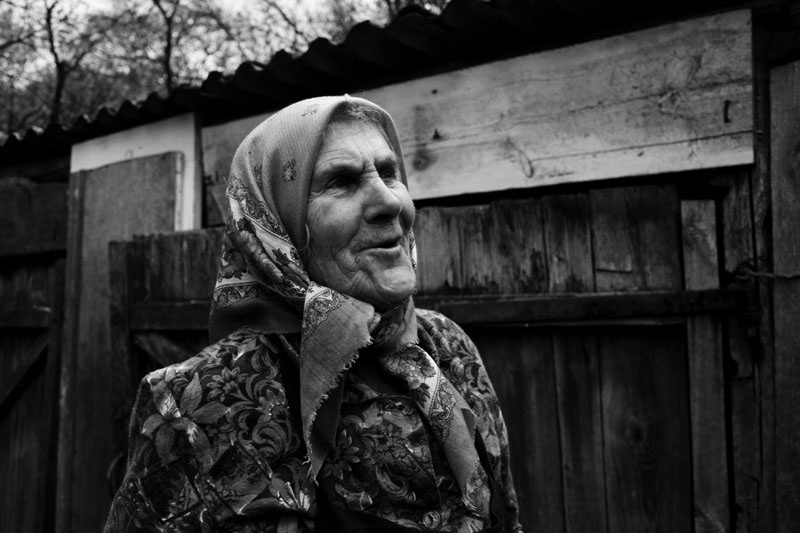

A silence swallows Pripyat, this was what I noticed when I took my first step in the main square. It immediately established where I was: an abandoned city that once housed workers of the Chernobyl power plant and their families. The autumn weather that was almost ready to make its official shift into winter added a hue that amplified this atmosphere. Freezing, I walked towards a building that turned out to be the cultural center.
Several days earlier, we were visiting small villages around Chernobyl. I recall meeting the youthful mayor of Strakholesie and noticing a long faint scar below her neck. I didn't think much of it until someone pointed out that it might be from thyroid cancer, one of the many health problems caused by radiation. The mayor's warm hospitality extended an invitation to have chai at her office. I could sense her slight nervousness in trying to accommodate visitors, even though an elaborate spread of Ukrainian pastries and beautifully lined tea cups crowding her desk should instill confidence.
The cultural center, like many of the other structures within the zone of alienation, was badly damaged from over two decades of no maintenance. The chipped paint created strange cracked pastel patterns on walls, small trees grew from the concrete and drops of water from damaged ceilings would momentarily interrupt the heightened silence. This was a unifying trait for the hospital, apartments and schools that I visited in Pripyat.
In another village, a group of elderly women were huddled together on a narrow bench that leaned against some wooden fences. It was an image of Russian provincial life, or at least how I imagined it. One of them came closer, fascinated by the contrast of my Asian features. She taught me a few foreign words, and then with her arm locked against mine, she pulled me to the direction of her house. With simple gestures, I understood what she wanted, a picture of her standing in front of her home. She was obviously proud of it, and the best thing I could do was acknowledge this with a photograph.
A rusted birthing chair was in the midst of the thick foliage that guarded Pripyat hospital's entrance. Upon walking in, I was greeted by a big notice board that stated the last shift timings of the hospital staff. It's relics like these that illustrate how time stands still in Pripyat and other abandoned villages around Chernobyl. Soon, I wander into the maternity ward and stare at the empty cribs, a strange feeling comes over me as I think about the babies, the very beginnings of a human life that once filled this room.
Further away from Chernobyl were towns that we decided to explore. Uninvited, I entered an arts school where some students decided to show me around. A lot of the children knew Spanish, I couldn't understand why. But it was an easier language to decipher, and with a few tries, the students and I understood each other. Later on, I would find out that a lot of children who were sick from radiation went to Cuba to be treated. I can only assume a link between this and why they have learned Spanish. But it might be a faulty assumption. A teacher let me observe her conduct a sewing class, and when I finally had to leave, one of the kids decided to give me a hug.
I went into Pripyat's abandoned apartments and cottages scattered in nearby villages. Looting has left all these homes virtually void of memory. Once in a while, you'll see items like shoes or family portraits, these are the last traces of the inhabitants. In a trip to Chernobyl's power plant, a guide would go on to say that the disaster showed both the best and worst in man. The best because people sacrificed their lives to contain the initial blast, and the worst because looters would take everything. I enter apartments where I could see lonely pegs still clipped to strings, and I have visions of melancholic domesticity, a woman hanging laundry on a Sunday morning. Everyone had to be evacuated in a hurry, under the guise that it would only be temporary. The disaster was concealed by the government, citizens and the rest of the world kept in the dark, while the radiation continued to spread. This is something that will remain for many decades.
All these scenes contrast each other. My pre-conditioned apocalyptic notions are visible in the ghost city of Pripyat and abandoned homes, yet villages around Chernobyl indicate strong signs of human life. Almost like a process where I expected desolate landscapes, and gradually came to see the strength of people going on with their lives. Their humble homes well within the proximity of Chernobyl, a symbol that has taken so many lives and continues with its legacy even today.
Here, the Soviet era is preserved, time stands faithfully still. Yet, it is also going through constant physical and social change. World views on Chernobyl remains constant: the worst nuclear disaster in history that should never be forgotten. But during my last day, one last walk through a small village, me and my friend stumble onto a beautiful lake. The laughter of mischievous children pierces the surprisingly warm air, and I find myself in the calming presence of both death and life.
Several days earlier, we were visiting small villages around Chernobyl. I recall meeting the youthful mayor of Strakholesie and noticing a long faint scar below her neck. I didn't think much of it until someone pointed out that it might be from thyroid cancer, one of the many health problems caused by radiation. The mayor's warm hospitality extended an invitation to have chai at her office. I could sense her slight nervousness in trying to accommodate visitors, even though an elaborate spread of Ukrainian pastries and beautifully lined tea cups crowding her desk should instill confidence.
The cultural center, like many of the other structures within the zone of alienation, was badly damaged from over two decades of no maintenance. The chipped paint created strange cracked pastel patterns on walls, small trees grew from the concrete and drops of water from damaged ceilings would momentarily interrupt the heightened silence. This was a unifying trait for the hospital, apartments and schools that I visited in Pripyat.
In another village, a group of elderly women were huddled together on a narrow bench that leaned against some wooden fences. It was an image of Russian provincial life, or at least how I imagined it. One of them came closer, fascinated by the contrast of my Asian features. She taught me a few foreign words, and then with her arm locked against mine, she pulled me to the direction of her house. With simple gestures, I understood what she wanted, a picture of her standing in front of her home. She was obviously proud of it, and the best thing I could do was acknowledge this with a photograph.
A rusted birthing chair was in the midst of the thick foliage that guarded Pripyat hospital's entrance. Upon walking in, I was greeted by a big notice board that stated the last shift timings of the hospital staff. It's relics like these that illustrate how time stands still in Pripyat and other abandoned villages around Chernobyl. Soon, I wander into the maternity ward and stare at the empty cribs, a strange feeling comes over me as I think about the babies, the very beginnings of a human life that once filled this room.
Further away from Chernobyl were towns that we decided to explore. Uninvited, I entered an arts school where some students decided to show me around. A lot of the children knew Spanish, I couldn't understand why. But it was an easier language to decipher, and with a few tries, the students and I understood each other. Later on, I would find out that a lot of children who were sick from radiation went to Cuba to be treated. I can only assume a link between this and why they have learned Spanish. But it might be a faulty assumption. A teacher let me observe her conduct a sewing class, and when I finally had to leave, one of the kids decided to give me a hug.
I went into Pripyat's abandoned apartments and cottages scattered in nearby villages. Looting has left all these homes virtually void of memory. Once in a while, you'll see items like shoes or family portraits, these are the last traces of the inhabitants. In a trip to Chernobyl's power plant, a guide would go on to say that the disaster showed both the best and worst in man. The best because people sacrificed their lives to contain the initial blast, and the worst because looters would take everything. I enter apartments where I could see lonely pegs still clipped to strings, and I have visions of melancholic domesticity, a woman hanging laundry on a Sunday morning. Everyone had to be evacuated in a hurry, under the guise that it would only be temporary. The disaster was concealed by the government, citizens and the rest of the world kept in the dark, while the radiation continued to spread. This is something that will remain for many decades.
All these scenes contrast each other. My pre-conditioned apocalyptic notions are visible in the ghost city of Pripyat and abandoned homes, yet villages around Chernobyl indicate strong signs of human life. Almost like a process where I expected desolate landscapes, and gradually came to see the strength of people going on with their lives. Their humble homes well within the proximity of Chernobyl, a symbol that has taken so many lives and continues with its legacy even today.
Here, the Soviet era is preserved, time stands faithfully still. Yet, it is also going through constant physical and social change. World views on Chernobyl remains constant: the worst nuclear disaster in history that should never be forgotten. But during my last day, one last walk through a small village, me and my friend stumble onto a beautiful lake. The laughter of mischievous children pierces the surprisingly warm air, and I find myself in the calming presence of both death and life.

